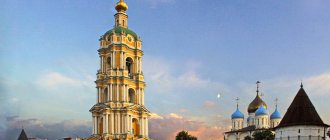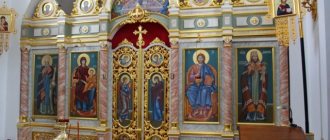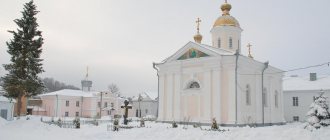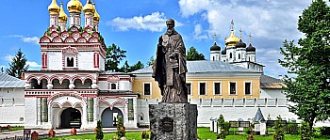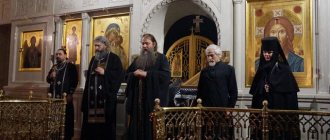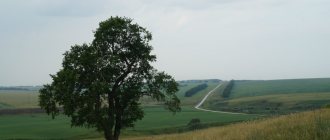Mir
Ukraine Rivne region village of Derman Second Holy Trinity Derman Convent Map loading in progress...
{"format":"leaflet","minzoom":false,"maxzoom":false,"limit":50,"offset":0,"link":"all","sort":[""], "order":[],"headers":"show","mainlabel":"","intro":"","outro":"","searchlabel":"\u2026 \u0441\u043b\u0435\ u0434\u0443\u044e\u0449\u0438\u0435 \u0440\u0435\u0437\u0443\u043b\u044c\u0442\u0430\u0442\u044b","default":"","import-annotation":false,"width ":"auto","height":"350px","centre":{"text":"","title":"""link":"""lat":50.37000499999999902911440585739910602569580078125,"lon": 26.24979700000000093496055342257022857666015625,"icon":""},"title":"","label":"","icon":"","lines":[],"polygons":[], "circles":[ ],"rectangles":[],"copycoords":false,"static":false,"zoom":8,"defzoom":14,"layers":["OpenStreetMap"],"image layers":[] ,"overlays":[],"resizable":false,"fullscreen":true,"scrollwheelzoom":true,"cluster":false,"clustermaxzoom":9,"clusterzoomonclick":true,"clustermaxradius":80, "clusterspiderfy":true,"geojson":"","clicktarget":"","showtitle":true,"hidenamespace":false,"template":"","userparam":"","activeicon": "","pagelabel":false,"ajaxcoordproperty":"","ajaxquery":"","locations":[{"text":"\u003Cb\u003E\u003Ca href=\"/palomnik/%D0% A1%D0%B2%D1%8F%D1%82%D0%BE-%D0%A2%D1%80%D0%BE%D0%B8%D1%86%D0%BA%D0%B8%D0%B9_ %D0%94%D0%B5%D1%80%D0%BC%D0%B0%D0%BD%D1%81%D0%BA%D0%B8%D0%B9_%D0%B6%D0%B5%D0 %BD%D1%81%D0%BA%D0%B8%D0%B9_%D0%BC%D0%BE%D0%BD%D0%B0%D1%81%D1%82%D1%8B%D1%80 %D1%8C\" title=\"\u0421\u0432\u044f\u0442\u043e-\u0422\u0440\u043e\u0438\u0446\u043a\u0438\u0439 \u0414\u0435\u0440\u043c\u0430\u 043d\ u0441\u043a\u0438\u0439 \u0436\u0435\u043d\u0441\u043a\u0438\u0439 \u043c\u043e\u043d\u0430\u0441\u0442\u044b\u0440\u044c\»\ u003E\u0421\u0432\u044f\ u0442\u043e-\u0422\u0440\u043e\u0438\u0446\u043a\u0438\u0439 \u0414\u0435\u0440\u043c\u0430\u043d\u0441\u043a\u0438\u0439 \u 0436\u0435\u043d\u0441\u043a \u0438\u0439 \u043c\u043e\u043d\u0430\u0441\u0442\u044b\u0440\u044c\u003C/a\u003E\u003C/b\u003E\u003Chr /\u003E\u003Ca href=\"/palom nik/%D0 %A1%D0%B2%D0%BE%D0%B9%D1%81%D1%82%D0%B2%D0%BE:%D0%90%D0%BD%D0%BD%D0%BE%D1% 82%D0%B0%D1%86%D0%B8%D1%8F\" title=\"\u0421\u0432\u043e\u0439\u0441\u0442\u0432\u043e:\u0410\u043d\u043d\u043e\u0442 \u0430\u0446\u0438\u044f\»\u003E\u0410\u043d\u043d\u043e\u0442\u0430\u0446\u0438\u044f\u003C/a\u003E: \u041e\u0441\u043d\u0 43e\u0432\u0430\ xv 38\u043a\u043d\u044f\u0437\u0435 \u043c \u041a\u043e\u043d\u0441\u0442\u0430\u043d\u0442\u0438\u043d\u043e\u043c \u041e\u0441\u0442\u0440\u043e\u0436\u0441\ u043a\u0438\u043c,\u0432\ u043f\u043e\u0441\u043b\u0435\u0434\u0441\u0442\u0432\u0438\u0438 \u0441\u043e\u0434\u0435\u0440\u0436\u0430\u043b\u0441\u04 4f\u043d\u0430\u0441\u0440\ u0435\u0434\u0441\u0442\u0432\u0430 \u043a\u043d\u044f\u0437\u0435\u0439 \u041e\u0441\u0442\u0440\u043e\u0436\u0441\u043a\u0 438\u0445. \u041f\u0440\u0438 \u043e\u0431\u0438\u0442\u0435\u043b\u0438 \u0438\u043c\u0435\u0435\u0442\u0441\u044f \u0433\u043e\u0441 \u0442\u0438\u043d\u0438\u0446 \u0430 \u0434\u043b\u044f \u043f\u0430\u043b\u043e\u043c\u043d\u0438\u043a\u043e\u0432.","title":"\u0421\u0432\u044f\u0442\u043e -\u0422\ u0440\u043e\u0438\u0446\u043a\u0438\u0439 \u0414\u0435\u0440\u043c\u0430\u043d\u0441\u043a\u0438\u0439 \u0436\u0435\u043d\u0 441\u043a\u0438\u0439\u043c\ u043e\u043d\u0430\u0441\u0442\u044b\u0440\u044c","link":"","lat":50.37000499999999902911440585739910602569580078125,"lon":26.24979700 000000093496055342257022857666015625,"icon":""}],"imageLayers":[ ]}
50.370005; 26.249797
Ukraine, Rivne district, Mizotskaya village community, village of Derman Second
village of Derman Second, Rivne region
Ukraine
Telephone:
(03652) 5–83–18
Dermansky Holy Trinity Monastery
- an Orthodox convent of the Rivne and Ostrog diocese in the village of Derman in Volyn, one of the centers of the anti-Uniate struggle in Little Rus' at the end of the 16th and first half of the 17th centuries. Founded at the end of the 15th century by magnate and prince Konstantin Ostrogsky, it was subsequently maintained at the expense of the Ostrog princes. There is a hotel for pilgrims at the monastery.
History[edit]
Derman was first mentioned in 1497 as a possession granted to Prince Konstantin Ivanovich Ostrozhsky. Oct 11 In 1499, he placed “in the Church of the Holy and Life-Giving Trinity of the honorable monastery of Derman” a manuscript of the teachings of the Patriarch of Constantinople, St. Callista (†XIV) with a dedicatory inscription (it is the earliest news about the monastery); in 1507, the prince presented the monastery with a handwritten Gospel, where a record of this event was made in someone else’s hand on behalf of Konstantin Ivanovich; in 1538, Daniil Elovitsky donated a handwritten “Apostle” to the “monastery of the Great Lavra in Dermani”.
In 1575-1580 The affairs of the monastery were managed, as a manager, by the Russian pioneer printer Ivan Fedorov: having moved from Moscow to Zabludov (then in Lithuania, now in Poland), and then to Lvov, he was invited to the Ostrogsky estates by Prince Vasily-Konstantin (son of Konstantin Ivanovich) . Seeing the difficult situation of the Orthodox in the Catholic Polish-Lithuanian Commonwealth, Vasily-Konstantin cared about church learning, which would help defend the truth before those of other faiths, and therefore attracted the best Orthodox scribes of his time (in 1580-1581, the prince, together with Fedorov, published 1 -th complete printed Church Slavonic Bible).
Derman Monastery. Painting by O. Ezhov, 1845
In 1602, the prince confirmed for the monastery all the lands granted to it and ordered the monks to live according to the communal rules: “We give our Dermansky monastery with ... all its accessories for the common life of the monks”; “The monastery, which is called konovia (dormitory), in our time ... was given (to the monks), laid and founded” (by laying is meant stone construction, see below). The cited charter of Vasily-Kontantin also prescribed to accept into the monastery “only those who would like to obey that order (the communal order) and who would strive for science.” The prince also gave printing presses to the monks, as stated in the preface of the first book published in Dermani - “Octoeha” 1603-1604. The Derman printing house was headed by priest Damian Nalivaiko - confessor of Vasily-Constantine, rector of the Epiphany Cathedral in Ostrog, writer, brother of Severin Nalivaiko (leader of the uprising in Ukraine in 1594-1596 against Poland). In 1602-1605. The abbot of the monastery was Abbot Isaac Boriskovich, who had previously lived on Mount Athos and received the title of protosynkel (secretary) of the Patriarch of Alexandria, and ended his earthly journey as Bishop of Lutsk (†1643). Together with Fr. John of Boretsky, the future Metropolitan of Kiev Job (†1631), and St. John of Boretsky worked as Isaac and Damian in Dermani. Job Knyaginitsky is an ascetic of Athos and the future founder of the Manyavsky Skete in Galicia (†1621). In 1605, the printing house was moved to Ostrog (again after 1580), and all the workers listed above went to other places of service. In 1608, Vasily-Constantine entrusted the monastery to the exarch of the Patriarch of Constantinople, Abbot Isaiah Balaban, and subordinated all the monasteries in his estates to him.
Later, Derman ended up in the possession of the Catholic prince Alexander Zaslavsky. In 1627, Archbishop turned to him, asking for a monastery to manage. Polotsk Meletiy Smotritsky. In response, the prince demanded that the petitioner join the union. A famous writer-theologian of his time, Bishop Meletius, like many of his compatriots, painfully sought a peaceful way out of the conflict between the oppressed Orthodox citizens of the Polish-Lithuanian Commonwealth and the Catholic authorities of the country. But due to the fact that Smotritsky’s upbringing in childhood was in the spirit of Orthodoxy, and in his youth - under the influence of Catholicism, this talented and learned hierarch constantly wavered in his views. As a result, he never developed strong convictions. Zaslavsky’s condition was accepted (with the proviso that Meletius’s Uniatism would be temporarily kept secret). According to one of Smotritsky’s biographers, the Dermansky monastery attracted Meletius because, with frequent forced wanderings, it “freed the writer from the life that burdened him “on someone else’s bread.” In 1628, Smotrytsky openly recognized himself as a Uniate; in 1633 he rested in the Derman monastery, where he was buried.
In con. 1st half XVII century in the monastery, a “Commemoration Book” was compiled, where against the name of the “confessor” (spiritual father) Hieromonk Abraham (the phrase indicates the author and the time, not earlier than which the “Commemoration Book” appeared). The last entry with a date, made in the “Commemoration Book” by the hand of Fr. Abrahamia, dates back to 1644 (in 1663 another entry was made in a different handwriting). The book mentions “Vasily K(onstantin) K(onstantinovich), K(nyaz) Ostroz(ky), who walled the church and belfry, and was himself at the foundation, and the founder of the entire Dermansky monastery. Resigned to fate from the creation of the world 6961, from the Nativity of Christ 1608.” However, the named year “from creation” does not correspond to 1608 AD. (when Vasily-Konstantin actually died), and 1453 - in the era of Vasily Fedorovich Ostrozhsky, nicknamed Red (great-grandfather of Vasily-Konstantin): probably, during the years of writing the “Commemoration” there was a legend about the founding of the monastery of V.F. Ostrozhsky, and Fr. Abraham mixed two princes into one person.
Despite Smotrytsky’s act, the union, according to historians, was established in the monastery later - under the abbot Iannuariy Ogurtsevich (1712-1729), who in 1720 took part in the Uniate cathedral in Zamosc. In 1766, Abbot Melchizedek Znachko-Yavorsky, the abbot of the Matroninsky monastery in Cherkasy region, was temporarily detained in the monastery for his active work in defense of the Orthodox (in the same year, Father Melchizedek was helped to escape from Dermani to another part of Ukraine, which was under the protectorate of Russia ).
In con. XVIII century Derman became part of the Russian Empire, and in 1822 the monastery was returned to the Orthodox. Since 1833, 2 theological schools operated under him: a district and a parish (in 1854 they were united, in 1877 the district school was transferred to Klevan). In 1845-1873 the monastery was home to the suffragan bishops of the Volyn diocese, who bore the title “Ostrogsky”. In 1944, the monastery became a convent, in 1960 it was closed and allocated for a special boarding school, and in 1991 it was revived.
Interesting Facts
In the modern Lintul monastery there are 12 sisters permanently. Their maximum number was about 70 in the middle of the last century.
- The Lintul monastery was founded by Slavic nuns, but over time the founders were replaced by Finns who converted to Orthodoxy. Today, in the monastery located in Finland, services are conducted twice a day in Finnish. Access to the temple is always free.
- In the 70s, hard agricultural work was replaced by factory work - making candles. Lintula provides all Orthodox monasteries in Finland with its products, which makes it possible to independently maintain the monastic property. Gold embroidery, icon painting, and tourism are also important sources of income.
- Lintula became a refuge for many distressed people during the rise of communist power. In the early 20s, some noblewomen found temporary shelter here. It is also known that ladies from famous families secretly took monastic vows because they believed that they had found their destiny here.
Even today, nuns help us find our purpose in life, because in addition to worldly troubles, spiritual and pastoral activities always come first.
Description[edit]
The monastery is surrounded by a stone fence built in 1992 with the inclusion of the remains of a wall from the 15th-17th centuries. (the stone wall mentioned in the description of 1571 was strengthened in 1599-1608). The ring of the fence includes a fortress tower located on the north-eastern slope of the hill with a gate and a bell tier (from the 15th century it had 4 tiers at a height of 18 m; to get into the fortress through the gate on the 1st tier, you had to cross a wooden bridge across the ditch, and later the bridge was replaced by an earthen embankment; in the 1840s, a 5th bell tier with a dome was built on the tower, and its height was 30 m to the cross).
Holy Trinity Dermansky Convent
Adjacent to the tower from the northwest is a 1-story building of cells and a Sunday school, extended deep into the monastery estate to the west. Adjacent to the southwestern corner of the tower is a 1-story building built in 1827, elongated from north to south, where in 1833-1877. there were monastery schools (now cells).
In the center of the monastery stands the stone Church of the Holy Trinity, dating back to the beginning by historians. XVII century and acquired its current appearance after the additions of the 18th century and the middle. XIX centuries In 1992-1996. the interior of the temple was re-painted. To the south of the temple there is a T-shaped plan (“leg” in the center of the courtyard) 2-story building built in 1821 with the Church of St. Theodore of Ostrog 1871-1872 on the 2nd floor, reconsecrated in 2004 (St. Theodore, the father of Vasily the Red and great-grandfather of Konstantin Ivanovich, lived at the turn of the 14th-15th centuries and died as a monk of the Kiev Pechersk Lavra with the name Theodosius).
Northeast of the building with the temple of St. Theodora there is a chapel over the well (1994-1995). To the west of the Church of the Holy Trinity, an ancient 2-story building of cells stretches from north to south - the result of reconstruction in the 19th century. buildings 2nd floor XVII – XVIII centuries On the 2nd floor in the northern part of the building there is a temple of the Kazan Icon of the Mother of God; Opposite it, the building is adjacent to a porch with a rise to the 2nd floor (since 2010, the temple has been named in honor of the Kazan Icon and St. Innocent of Irkutsk). In the southwestern “backyard” of the described building in 2007-2009. a 2-story hotel and refectory building with a house church of St. Nicholas of Myra (consecrated in 2012; until 2010, it was planned to name the temple in memory of St. Innocent of Irkutsk).
Lintulsky Holy Trinity Monastery
The founder of the monastery is considered to be Fyodor Neronov, who bought the estate “Lentula” - translated the name means “Bird”. There is no clear historical information about why the famous statesman decided to turn Lentulu into a place where orphans, beggars could receive help and found a convent for nuns.
One version claims that the official responsible for railway traffic in Russia felt guilty for a major accident on the tracks, and the founding of a spiritual monastery was a way to ask for forgiveness from people and God.
Neronov donated about 200 hectares of land to the community and helped create the proper infrastructure for the community’s self-sufficiency (mill, small sawmill, apiary, poultry and barnyard).
The wooden church was consecrated in 1895, and from that moment on we can talk about a more or less independent and full-fledged life of the community, although it was officially opened a year later. Obtaining such quick permission to carry out the proper work to create the monastery was justified, because it was supposed to become not just a private manifestation of faith, but a stronghold of Orthodoxy on the Karelian Isthmus.
The beginning of the twentieth century was quite encouraging for the nuns, because they managed to support themselves independently, conduct active spiritual work, and as a result, the number of novices increased.
Since 1906, the official status of a monastery, and not a community, has been received.
The monks of the Valaam Monastery have always provided active assistance in spiritual and everyday construction. It was thanks to their efforts that in a short time the temple received all the necessary decorations and the very opportunity to hold services.
Shrines[edit]
- List of the Kazan Icon of the Mother of God.
It is to him that the words of the monastery “Memorial” are attributed to the healing of the future confessor of the monastery, Hieromonk Abraham, from blindness in 1636, as well as the words of the monastery inventory of 1776 about the image of the Mother of God, known from time immemorial for the grace of miracles. One day, after fervent prayer in front of this icon, the monks and villagers got rid of the epidemic (as the inscription on the icon says: “In memory of the deliverance from cholera in 1872 from the brotherhood of the monastery and the inhabitants of Dermansky”).
Contemporary Sacred Art in Lintul
What is interesting about the Holy Trinity Monastery is not only its history, but also the objects of modern spiritual art.
Rebuilt on the site of destroyed churches, the temples have modern architecture and interior design. This is understandable, because among the creators are Konstantin Xenopoulos, Alexander Vikström, Antero Turkki, Helena Nikkanen, Pertti Pulkkinen, Vilho Suonmaa.
All buildings on the territory of the monastery are modern in nature, only one of the chapels was created in the folk Karelian style. In the interior decoration, minimalism prevails both in the number of icons, paintings, and in the use of decorations.
Lintul Monastery is an original combination of Finnish cultural traditions and the Russian understanding of Orthodoxy.
Patronal holidays[edit]
Day of the Holy Trinity
— 50th day after Easter
Icon of the Blessed Virgin Mary “Kazan”
— July 21, November 4
Nicholas the Wonderworker, Archbishop of Myra, Saint
— May 22, December 19
Memory of St. Theodore of Ostrog - August 11 (24)
Memory of St. Innocent of Irkutsk - February 9 (22), November 26 (December 9)
Abbesses
- …
- St. Seraphima (Koretskaya) (1580 - 1633), 1st abbot. Resurrection Monastery
- Seraphima (Yarmolinskaya) (mentioned February 8, 1634 - mentioned July 19, 1645, mentioned 1650, 1654, 1656) [2]
- Anastasia (Yarmolinskaya) (mentioned February 27, 1652)
- Anna (Olesvyanskaya) (? - 1752)
- 1752 - 1795 - in the hands of the Uniates
…
Location[edit]
The village of Derman stretches out like a horseshoe, with its ends facing northeast, along the hills around the branched source of the river. Mouth. In 1939, the settlement was divided into two: the northwestern part of the “horseshoe” became Dermanya-Pervaya, the southeastern part – the Second (from 1946 to the end of the twentieth century, respectively, Ustenskoye-Pervoye and Ustenskoye-Second). The monastery occupies a spacious flat top of a low oval hill in the middle of Dermani Second.
Address
: 35751, Ukraine, Rivne region, Zdolbunovsky district, village. Derman-Second
Telephone:
(03652) 5–83–18
How to get there, what you can see and feel
There are different ways to get from Nizhny Novgorod.
Bus path . The starting point is Lyadov Square, Shcherbinki bus station. The Novgorod-Pavlovo intercity bus will take you to the Vorsma bus station (70 kilometers away). From the station, visitors will walk about another 2 km to the picturesque lake system, nicknamed by old-timers Tuscany - in the Italian manner.
A car ride differs little from that described. They drive along the Bogorodskaya highway, and, approaching Vorsma, turn left - to the “Bear” guest house, built in antique style (a mixture of Rus' and the Wild West). There is a colorful sign there, but the road to the monastery runs past. It is advisable to leave the car in the parking lot near the pond.
The monastery territory begins almost at the entrance to the town. The buildings belonging to the complex are scattered on the islands in the lowlands, leading to them are a metal gangway bridge and a dam. Along the densely covered path you will only have to reach a fence made of thin iron rods. The gates are open - then the walkways spread out across the courtyard-square.
Why "square?" Just a front garden, flower beds, pruned trees, clean paths are associated with a cultivated park space. The picture is idyllic, involuntarily provoking magical metamorphoses - when the mind is freed from thoughts, the conversation freezes, and the soul, surrounded by such beauty, soars to heaven. This is what the harmony of nature and human consciousness looks like.
Either in a clearing or on a cliff there are chapels-prayer-chapels in the Byzantine-Old Russian style: light-colored, with round or quadrangular columns, carving elements, kokoshniks and battlements at the top, sometimes with a cobblestone foundation-pavement at the bottom and a couple of steps in the center. Mandatory with an icon under a semi-circular or ribbed end, topped with a cross.
The church and temple ensemble does not look perfect, but it is quite decent. The atmosphere is conducive to both holiness and the desire to relax, to plunge into the natural world. Here they seek spiritual rehabilitation, gain inspiration for good causes and... hang locks on the fence with the inscription “Sasha + Luda = love.”
For a convinced urbanist, such corners are a rare chance to be imbued with positive energy in the realm of thick grasses and transparent waves with schools of silver fish. Feeling natural perfection away from the bustle of the city and fancy apartments in prestigious rich neighborhoods.
Why do they come here?
In order to join Orthodox rituals, to show care for the institution and its nuns, to make sure that architectural masterpieces exist - as well as professional virtuosos who are capable of reviving them from the dust. Since this is an energetically strong place, it attracts hunters to gain and strengthen faith in life, to tune in to successful changes.
Judging by the many reviews, religious and non-religious people come to this fairy tale, individually, collectively and with families, with children and old people. To enrich yourself aesthetically, move away from problems, relax and capture yourself in the bosom of your native landscapes - the embodiment of calm and serenity. Wonderful landscapes and a sublime, blissful aura heal and inspire.
no comments
Schedule of services and requirements
The list of sacred rites related to the needs of believers that are performed in local churches is extensive. Here prayers are ordered both for the living, healthy or suffering from illness, and for the deceased. Objects for various purposes, products, dishes are blessed. Food is sacred on certain days - on the eve of Christmas, Easter, Transfiguration and other holidays.
Entrance to the monastery is free, there are no restrictions. Prayers are held regularly—blessings of water, for health and repose. They organize memorial services, perform funeral services and practice multi-day commemorations and Sorokousts for the seriously ill. A candle box is available to tourists for those who want to light a candle for someone close to them.
The schedule of morning and evening prayers is traditional; visitors are always welcome to join them. Having lunch at a common table (and the schema girls cook deliciously) and asking for advice are also in the order of things.


